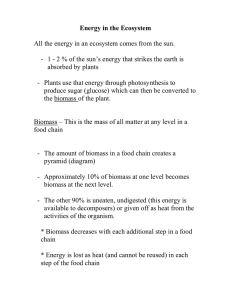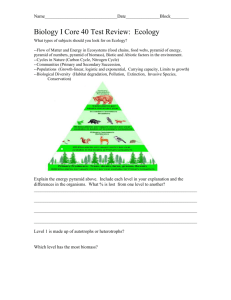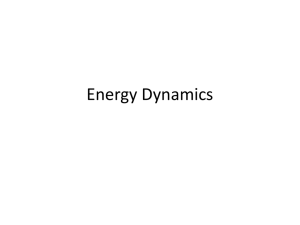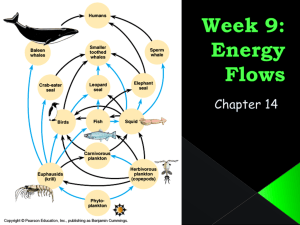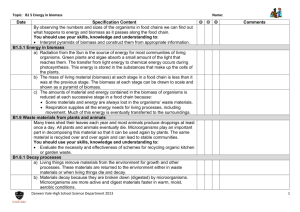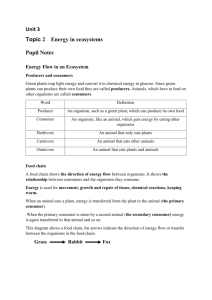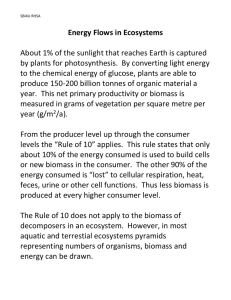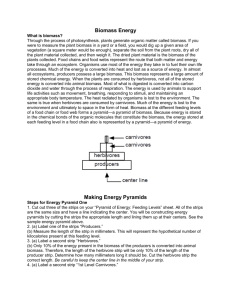Minute Minder #1 Please move your minute minder sticky to 25 full
advertisement
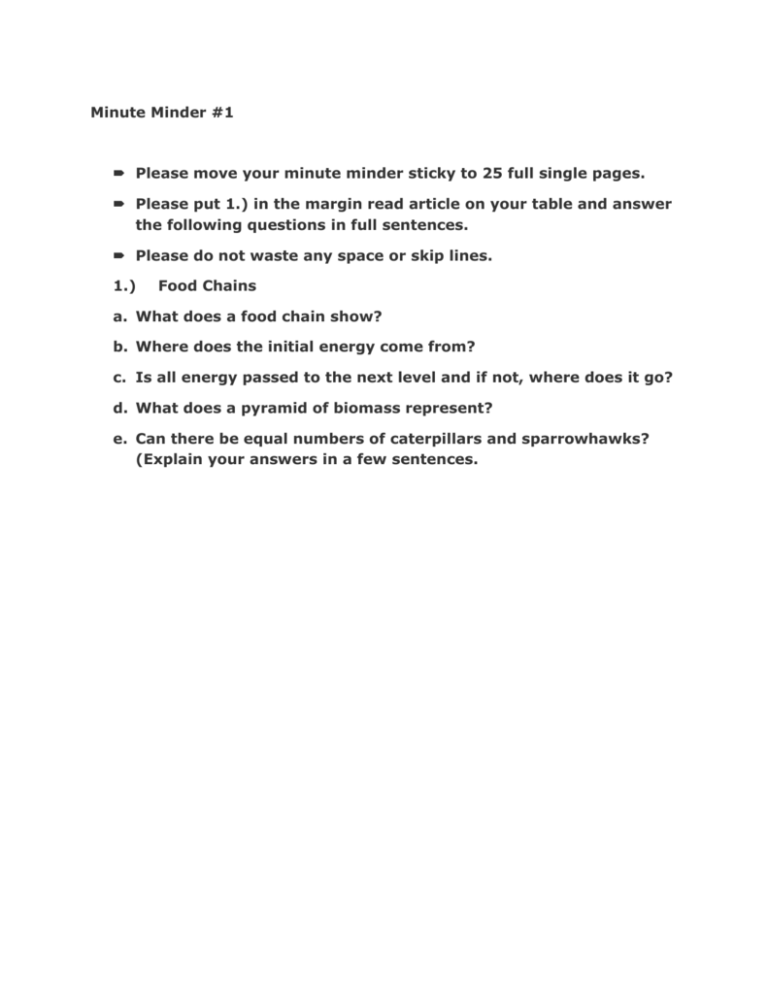
Minute Minder #1 Please move your minute minder sticky to 25 full single pages. Please put 1.) in the margin read article on your table and answer the following questions in full sentences. Please do not waste any space or skip lines. 1.) Food Chains a. What does a food chain show? b. Where does the initial energy come from? c. Is all energy passed to the next level and if not, where does it go? d. What does a pyramid of biomass represent? e. Can there be equal numbers of caterpillars and sparrowhawks? (Explain your answers in a few sentences. Food chains A food chain shows what eats what in a particular habitat. For example, grass seed is eaten by a vole, which is eaten by a barn owl. The arrows between each item in the chain always point in the direction of energy flow - in other words, from the food to the feeder. Food chain The Sun is the ultimate source of energy for most communities of living things. Green plants absorb some of the Sun’s light energy to make their own food by photosynthesis. The other organisms in a food chain are consumers, because they all get their energy and biomass by consuming - eating - other organisms. It helps if you can recall the meaning of some common words used with food chains. Common words used with food chains and their meaning Word Meaning Producers Green plants - they make food by photosynthesis. Primary consumers Usually eat plant material - they are herbivores. For example rabbits, caterpillars, cows and sheep. Secondary consumers Usually eat animal material - they are carnivores. For example cats, dogs and lions. Predators Kill for food. They are either secondary or tertiary consumers Prey The animals that predators feed on. Scavengers Feed on dead animals. For example, crows, vultures and hyenas are scavengers. Decomposers Feed on dead and decaying organisms, and on the undigested parts of plant and animal matter in faeces. Energy transfer Energy is transferred along food chains from one stage to the next. But not all of the energy available to organisms at one stage can be absorbed by organisms at the next one. The amount of available energy decreases from one stage to the next. Some of the available energy goes into growth and the production of offspring. This energy becomes available to the next stage, but most of the available energy is used up in other ways: energy released by respiration is used for movement and other life processes, and is eventually lost as heat to the surroundings energy is lost in waste materials, such as faeces All of the energy used in these ways returns to the environment, and is not available to the next stage. Most food chains are pretty short. There are rarely more than four stages, because a lot of energy is lost at each stage. Pyramids of biomass Biomass means the mass of living material at a stage in a food chain. The biomass goes down as you go from one stage to the next, just like the amount of energy. A pyramid of biomass is a chart, drawn to scale, showing the biomass at each stage in a food chain. The bars become narrower as you reach the top. This pyramid of biomass is for the food chain: oak tree → caterpillar → blue tit → sparrowhawk Note that you do not need to draw the organisms. But you must draw your pyramid of biomass to scale. Each bar should be labelled with the name of the organism.


